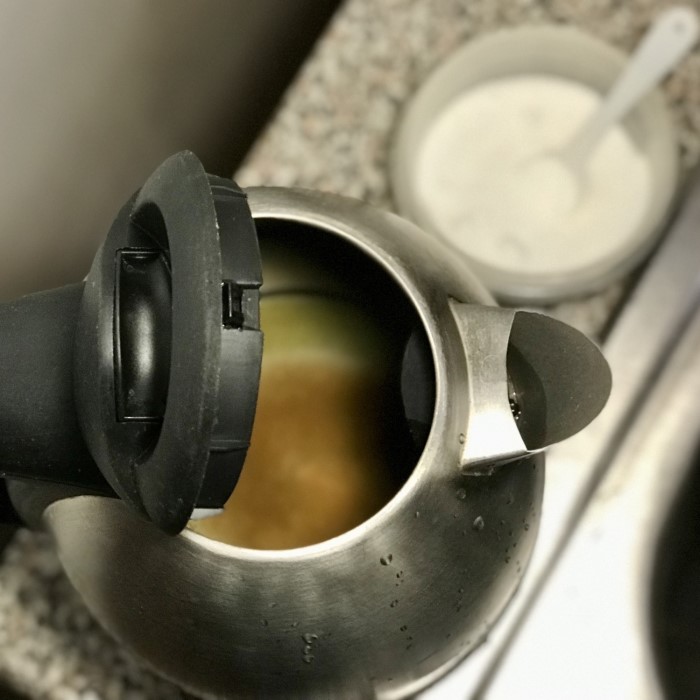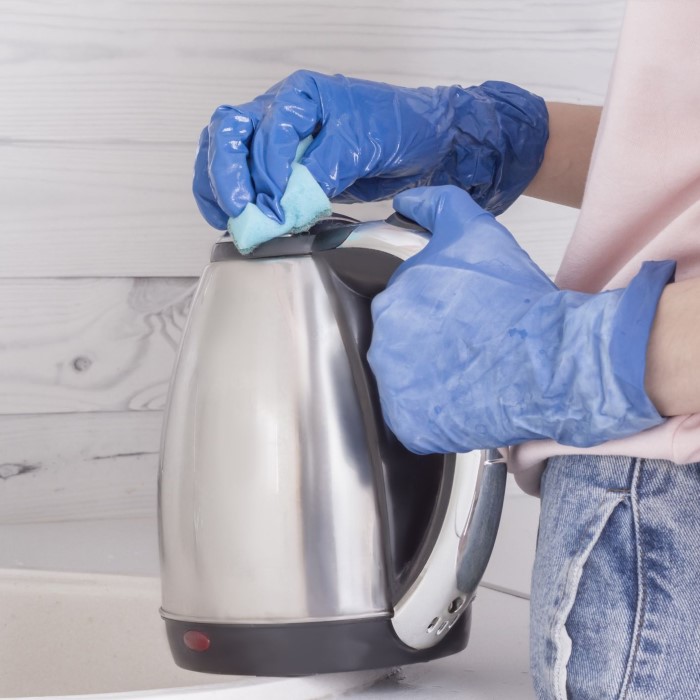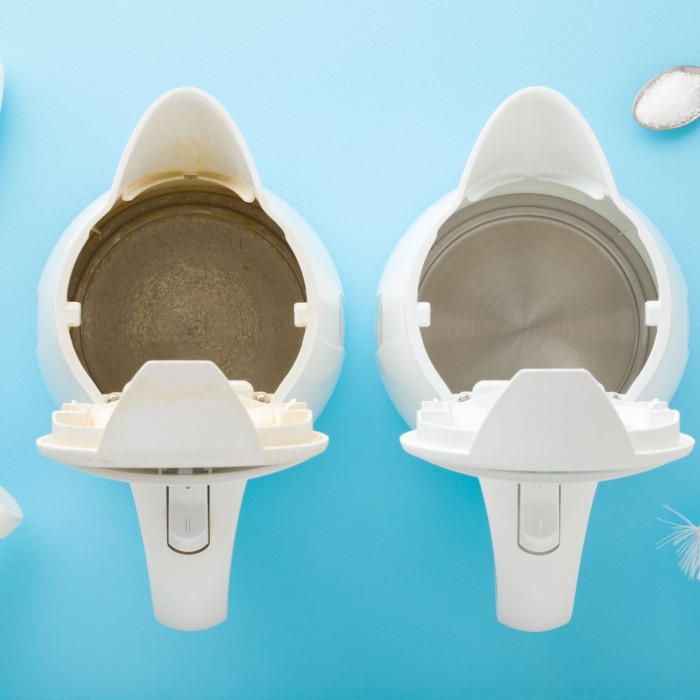Introduction: The Necessity of Cleaning Your Electric Kettle
Electric kettles have swiftly become staples in our kitchens, offering convenience and fast boiling times for water. Whether for tea, coffee, or instant meals, they enhance our cooking and brewing experiences. However, just like any other appliance, electric kettles require regular maintenance, particularly cleaning. The question arises: how to clean electric kettle effectively?
Over time, mineral deposits, limescale, and residue can develop from regular use. These build-ups can affect not only the performance of your kettle but also the taste of the water boiled inside. In this article, we’ll discuss various methods for cleaning your electric kettle and provide valuable tips to ensure it remains in top condition.

By the end of this guide, you’ll be equipped with all the knowledge necessary to keep your electric kettle sparkling clean, preventing those annoying build-ups and enhancing your boiling experience.
Understanding the Build-Up in Electric Kettles
- What Causes Mineral Buildup?
- The primary culprit behind the need for regular cleaning in electric kettles is limescale and mineral deposits. Hard water — water that contains high levels of minerals, particularly calcium and magnesium — often contributes to these deposits. When hard water is boiled, the minerals are left behind, forming visible buildup.
- Why Is Cleaning Important?
- Regular cleaning goes beyond aesthetics. A clean kettle ensures efficient operation and helps maintain the quality of the water. If the kettle is not regularly cleaned, the tough limescale may affect the heating element, leading to inefficiencies, higher energy consumption, and shorter lifespan.
- Signs Your Kettle Needs Cleaning:
- Be attentive to visible signs of limescale or residue inside your kettle. Pay attention to any discoloration of the water, a metallic taste, or even strange smells when boiling. Any of these indicators are signs that it’s time to clean your kettle.
How to Clean Electric Kettle: Best Methods
1. Cleaning with White Vinegar

How to clean electric kettle? White vinegar is a versatile and effective cleaning agent. It’s an eco-friendly solution that tackles mineral deposits effectively due to its acidity. Here’s how to use it to clean your electric kettle:
Prepare the Vinegar Solution
- Gather Materials:
- Before starting the cleaning process, gather all the necessary materials. You will need white vinegar, water, and measuring tools. Ensure your electric kettle is also unplugged and at room temperature.
- Mix the Ingredients:
- Measure out equal parts of water and vinegar. For instance, if you’re using a standard-sized kettle, you might fill it halfway with a mixture of 1 cup of water and 1 cup of white vinegar. This creates an effective cleaning solution.
- Why Use Vinegar?:
- Vinegar is an acidic solution that effectively breaks down mineral deposits like limescale. It is safe, natural, and readily available, making it a popular choice for cleaning kitchen appliances.
- Recap of Measurements:
- A general rule of thumb is to use a 1:1 ratio of vinegar to water when creating your solution. Adjust the quantities based on the size of your kettle while maintaining this ratio.
Boil the Mixture
- Plug in the Kettle:
- Once the vinegar-water mixture is prepared, plug the kettle into the power outlet. Ensure that the jug is properly seated on its base to avoid any accidents.
- Start the Heating Process:
- Turn on the kettle and allow the vinegar-water solution to heat up. Keep an eye on it as it begins to boil. Boiling causes the vinegar to activate its cleaning properties effectively.
- Avoid Overheating:
- When the kettle comes to a boil, it is important to monitor it closely. Turn off the kettle once boiling is complete to avoid burning the solution, which could release unpleasant odors and diminish its effectiveness.
- Safety Precautions:
- Exercise caution while the kettle is boiling. Avoid touching the kettle’s body or spout, as they can become very hot.
Soak the Kettle
- Let the Mixture Sit:
- After turning off the kettle, allow the vinegar-water mixture to sit for about 30 minutes. This soaking time is essential for the vinegar to penetrate and dissolve any limescale or mineral buildup.
- Effective Treatment:
- During this time, the acidity of the vinegar will work to break down deposits that may have accumulated inside the kettle. This soaking method is effective for both the heating element and the interior surfaces.
- Use Caution:
- Ensure that the kettle remains unplugged during the soaking period. It’s also advisable to leave the lid closed to retain heat, which can enhance the cleaning process.
- Check for Results:
- After the soaking period, examine the solution. You may notice that it has changed color or that some sediment has settled at the bottom. This indicates that the limescale is being effectively removed.
Rinse Thoroughly
- Pour Out the Solution:
- After soaking, carefully pour out the vinegar solution. Be cautious, as it may be hot. You can use a sink strainer to catch any larger deposits that may come out with the liquid.
- Multiple Rinses Recommended:
- Rinse the kettle several times with clean, fresh water to thoroughly remove all traces of vinegar. Make sure to fill the kettle, swish the water around, and then pour it out.
- Check for Residue or Odors:
- Inspect the kettle after rinsing. Ensure there’s no lingering vinegar smell, which can impact the flavor of the water subsequently boiled. Rinsing well is essential for removing both odors and residues.
- Drying the Kettle:
- After rinsing, let the kettle air dry upside down on a drying rack or clean towel to ensure that any remaining moisture can evaporate. This prevents any future buildup of mold or bacteria.
Repeat if Necessary
- Assess the Cleaning Results:
- After rinsing, take a close look at the interior of the kettle. If there are still visible limescale deposits or stains, it indicates that the cleaning process may need to be repeated.
- Prepare a Fresh Solution:
- If deposits remain, prepare a new batch of the vinegar-water solution using the same 1:1 ratio. This ensures a strong application for more effective cleaning.
- Repeat the Process:
- Go through the entire cleaning process again: boil the fresh solution, allow it to soak, and rinse thoroughly. Sometimes more than one cleaning session may be required for heavily scaled kettles.
- Final Assessment:
- After the second cleaning, inspect the kettle one last time. If it’s clean, return the kettle to regular use and enjoy the fresh taste of your hot beverages. If build-up persists, you may need to explore additional cleaning methods, such as using lemon juice or a commercial descaler.
2. Using Baking Soda for Stubborn Stains
Baking soda is another natural cleaning agent that works well for tackling tough stains and odors in electric kettles. Here’s the procedure:
- Make a Paste: Combine two tablespoons of baking soda with a cup of water. Stir until a paste-like consistency forms.
- Apply the Paste: Use a soft sponge or cloth to apply the baking soda paste to the interior of the kettle. Focus particularly on areas with heavy buildup.
- Scrub Gently: With the sponge or cloth, gently scrub the kettle’s interior. Be cautious not to use excessive force or abrasive materials, as this might scratch the kettle’s surface.
- Rinse Thoroughly: Once you have finished scrubbing, rinse the kettle thoroughly with clean water at least two to three times. Ensure no baking soda residue remains in the kettle.
Maintenance Tips for a Clean Electric Kettle
- Regular Cleaning Schedule:
- To maintain optimal performance, make it a habit to clean your electric kettle every month or two, depending on usage frequency. A regular cleaning routine can help prevent significant buildup from developing.
- Use Filtered Water:
- If possible, opt to use filtered water in your electric kettle. Filtered water can significantly reduce the mineral content, thereby lowering the chance of limescale build-up.
- Empty After Use:
- After each use, pour out any remaining water instead of letting it sit. If water is left in the kettle for extended periods, it can leave behind mineral residue and contribute to stale tastes.
- Store Properly:
- When not in use, store your kettle in a clean, dry space. Ensure that it is upright and free from moisture that could lead to mold or other types of damage.
- Inspect for Wear:
- Regularly check for any visible signs of wear or damage to both the kettle and its electrical components. Inspect the power cord for fraying, and observe the heating element for any signs of malfunction. Early detection can prevent accidents and ensure the kettle’s effective operation.
Additional Cleaning Methods
Apart from vinegar and baking soda, there are other methods to consider for cleaning your electric kettle.
- Lemon Juice Method:
- Similar to vinegar, lemon juice can be used as a natural descaler due to its acidic properties. Fill the kettle halfway with water and add the juice of one lemon. Boil, soak, and then rinse thoroughly afterward.
- Commercial Descalers:
- If natural methods are not sufficient, consider using commercial descaling products designed specifically for appliances. Follow the manufacturer’s instructions for proper use. They can be effective at removing tough limescale and mineral deposits.
Safety Precautions
- Avoid Overfilling:
- When cleaning your electric kettle, never overfill it. Doing so could lead to spillage during boiling, which can be hazardous.
- Unplug Before Cleaning:
- Always unplug the kettle before cleaning. This precautionary measure ensures your safety while handling water and cleaning solutions.
- Cooling Time:
- Let the kettle cool down before performing any cleaning. Handling a hot kettle can lead to burns or injuries.
FAQs About Cleaning Electric Kettles
How do you clean the inside of an electric kettle?
To clean the inside of an electric kettle, fill it with a solution of equal parts water and vinegar or use a baking soda paste. Bring it to a boil, let it soak, and then rinse thoroughly with clean water.
How to remove limescale from an electric kettle?
To remove limescale from an electric kettle, use vinegar or lemon juice solutions, soaking them inside the kettle before rinsing out with clean water.
Do you use baking soda or vinegar to descale a kettle?
Both baking soda and vinegar are effective for descaling an electric kettle. Vinegar and lemon juice can dissolve limescale effectively due to their acidic properties.
What to boil in an electric kettle to clean it?
You can boil a mixture of water and vinegar or water and lemon juice in the electric kettle to help clean limescale deposits.
Conclusion: Achieve Sparkling Results
In conclusion, knowing how to clean electric kettle effectively is essential for maintaining its functionality and ensuring the best-tasting water. By employing methods like vinegar and baking soda cleaning, you can remove stubborn limescale and mineral deposits with ease.
Routine maintenance, including regular cleaning and proper usage of filtered water, goes a long way in prolonging the life of your electric kettle. By understanding the importance of keeping your kettle clean and embracing these simple tricks, you can enjoy perfectly boiled water for your favorite drinks.
Following these practices will ensure that your electric kettle remains not only functional but also a gleaming addition to your kitchen for many years to come. With proper care, your kettle can serve you well and continue to enhance your culinary adventures!


